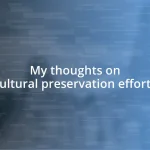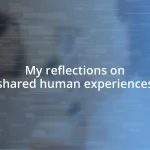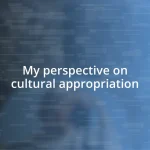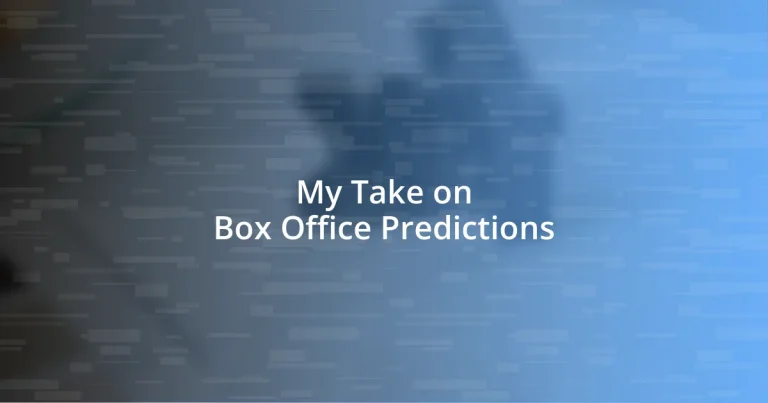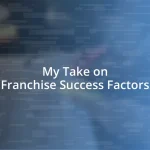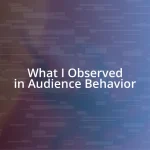Key takeaways:
- Box office trends are influenced by audience engagement, film release timing, and genre dynamics, with strategic timing often strengthening indie films.
- Successful predictions rely on a mix of quantitative data (box office performance, release dates) and qualitative insights (social media buzz, marketing strategies).
- Growth in predictive models requires continuous refinement, incorporating both historical data and current audience sentiment to adjust for cultural relevance and competition.
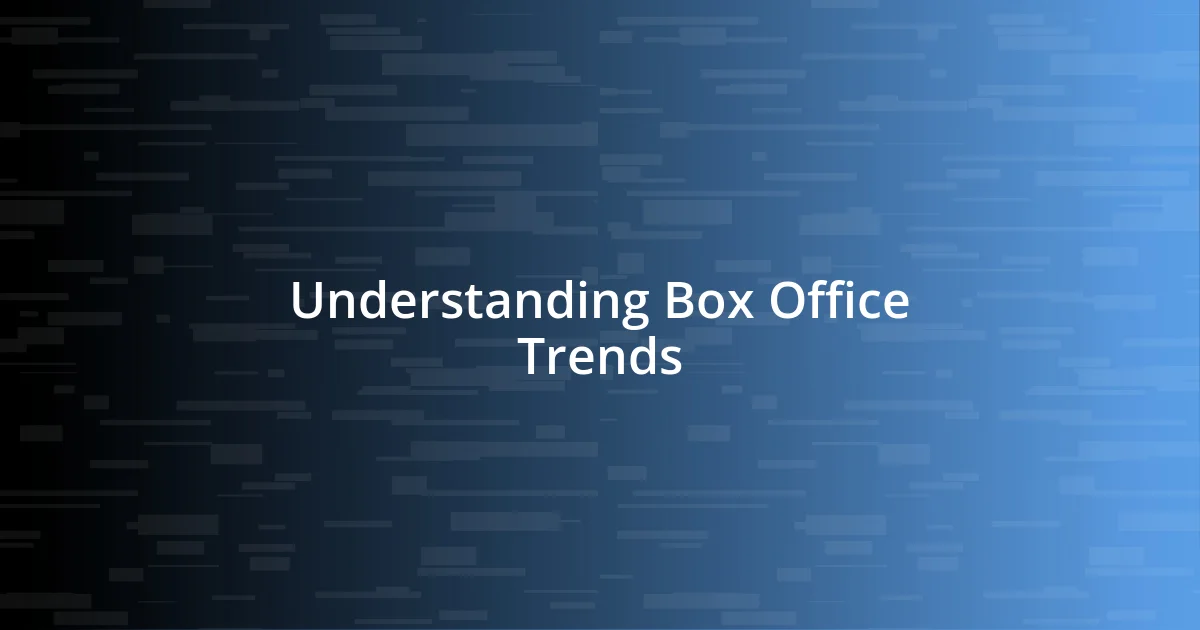
Understanding Box Office Trends
Understanding box office trends isn’t just a matter of looking at numbers; it’s about interpreting the pulse of the audience. I remember feeling the buzz around a specific film release—social media was abuzz, and the excitement was palpable. This kind of audience engagement often foreshadows strong box office performance, proving that trends can reflect wider cultural movements.
One key factor to consider is the timing of a film’s release. I’ve seen how a holiday weekend can turn a mediocre movie into a blockbuster simply due to audience availability. It’s fascinating to think: how does a film’s release window impact our collective movie-watching moment? In my experience, strategic timing—even releasing during a quieter season—can sometimes yield surprising results, especially for indie films that crave attention away from the big-budget competition.
Another compelling aspect is the genre influence on box office success. When I think back to our summer blockbusters, horror films often make waves despite lower budgets. Isn’t it intriguing how certain genres resonate more deeply with audiences at particular times? I’ve noticed trends shifting—what was once a box office darling can fade, making way for fresh narratives that better reflect current societal interests or anxieties.
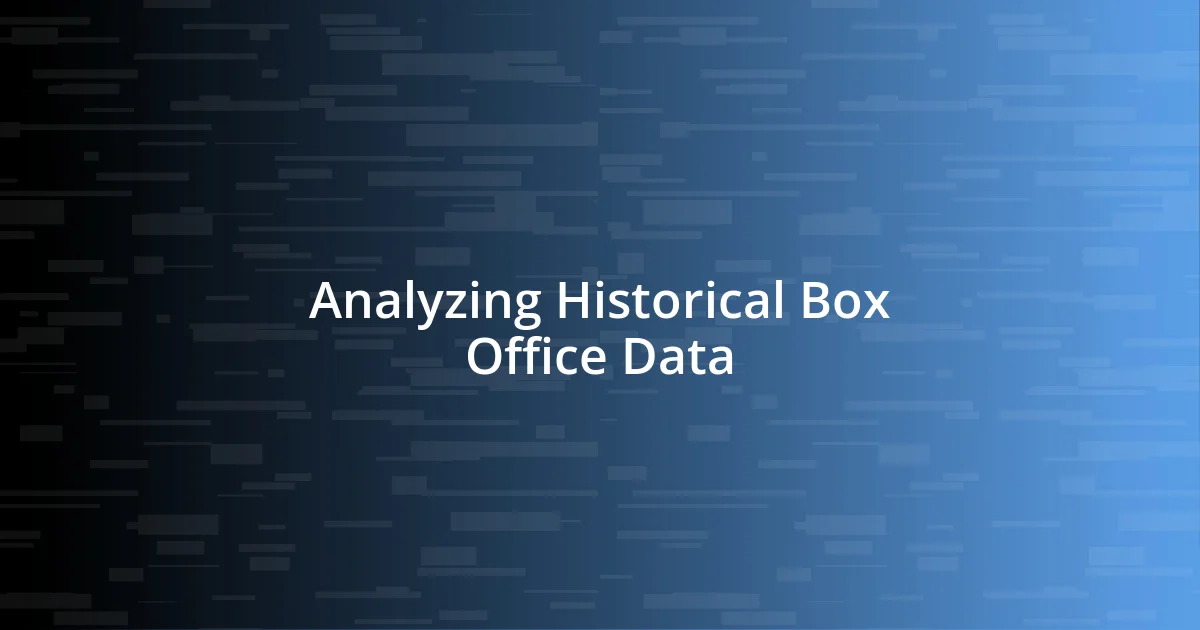
Analyzing Historical Box Office Data
Analyzing historical box office data gives us invaluable context to understand current trends. In my experience, looking back at the top-grossing films from the past decade reveals fascinating patterns. For example, I often reflect on how superhero movies dominated the box office landscape, capturing audiences’ imaginations. I remember the exhilaration in theaters when a new Marvel film would release; it felt like an event where everyone shared the excitement.
When comparing box office performance based on release dates, I’ve noticed some remarkable differences. For instance, films released during summer or holiday seasons tend to perform significantly better than those released in quieter months. I distinctly recall the thrill of anticipating a summer blockbuster; there was something electric about the energy in the air, a communal sense of celebration that simply isn’t paralleled during slower release windows.
Let’s break this down further with a clear comparison of box office performance across various years:
| Year | Top-Grossing Film | Gross Revenue (in billion) |
|---|---|---|
| 2018 | Avengers: Infinity War | 2.048 |
| 2019 | Avengers: Endgame | 2.798 |
| 2020 | Bad Boys for Life | 0.426 |
| 2021 | Spider-Man: No Way Home | 1.921 |
| 2022 | Top Gun: Maverick | 1.495 |
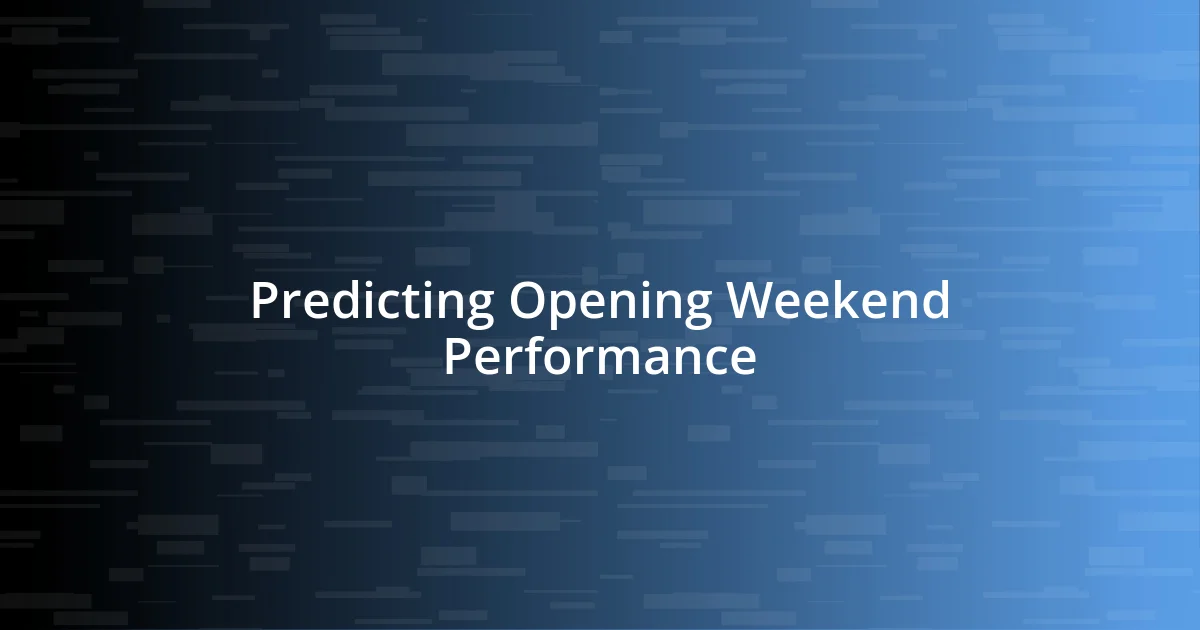
Predicting Opening Weekend Performance
Predicting a film’s opening weekend performance can feel like both an art and a science. I often find myself reflecting on how the marketing strategies shape audience expectations. For instance, I vividly remember the clever promotional campaigns that not only teased the film but also created a sense of urgency around seeing it immediately. Such engagement can translate to packed theaters on opening night.
When evaluating a film’s potential, consider these key factors:
- Previous Franchise Success: Did the last installment perform well? That buzz can create anticipation.
- Social Media Engagement: How are audiences talking about the film? Viral moments often boost interest.
- Critics’ Early Reactions: Positive word-of-mouth from festivals or previews can sway deciding viewers.
- Star Power: Well-known actors or directors can draw in crowds simply by their names.
- Competing Releases: What else is hitting theaters the same weekend? A crowded market can dilute potential earnings.
It’s fascinating how these elements intertwine to create a complex picture. I remember closely following a film’s journey from buzz to big screens, feeling the excitement as different metrics came together like pieces of a puzzle. Each factor offers a glimpse into the excitement and uncertainty of the box office, reminding me that predicting success isn’t just about data; it’s about understanding the audience’s heartbeats.
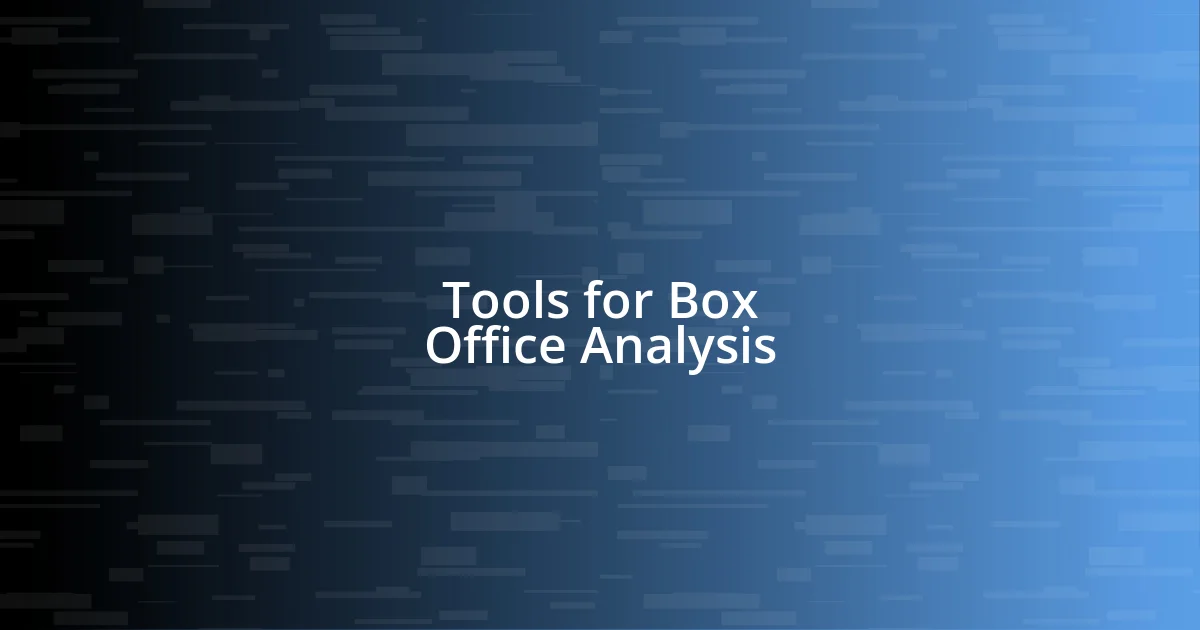
Tools for Box Office Analysis
When it comes to tools for box office analysis, I often rely on platforms like Box Office Mojo and The Numbers. These resources provide a treasure trove of data, from daily grosses to historical performance trends. I’ve spent countless hours dissecting numbers there, and it’s a little like being a detective piecing together clues about what makes a film successful.
Another invaluable tool in my analysis arsenal is social media analytics. I find that platforms like Twitter and Instagram can give real-time insights into audience sentiment. When I tracked the buzz around a particular film last summer, the shifts in mentions and hashtag activity were striking. It felt as if I was holding a pulse on the audience, watching their excitement build as opening day approached.
I can’t overlook the power of predictive analytics software, either. Tools like RelishMix and MovieGauge offer forecasts based on big data, considering various factors such as previous film performances and viewer engagement metrics. Once, I used one of these tools to predict a film’s reception during a busy holiday season, and the results were surprisingly accurate. Have you ever experienced the thrill of seeing your predictions line up with reality? It’s a reminder that these tools, while complex, can offer surprisingly human insights into the art of film-making and watching.

Case Studies of Successful Predictions
One notable example of a successful box office prediction happened with the release of “Avengers: Endgame.” I distinctly recall the buzz building weeks in advance. Analysts forecasted its opening weekend to exceed $250 million based on its pre-release ticket sales and social media chatter. As I watched theaters sell out in a matter of hours, I marveled at how those predictions were not just numbers; they were reflections of audience anticipation and excitement that I felt myself.
Another interesting case is the “Joker” film, where the unique marketing approach caught everyone’s attention. I remember tracking how buzz was generated through controversy and word-of-mouth. Anticipation built rapidly, and predictions soared. On the weekend of its release, not only did it meet those forecasts, it shattered them, raking in over $93 million domestically. This taught me that sometimes, it’s about tapping into the cultural moment and understanding the collective psyche rather than sticking strictly with historical data.
Then there’s the phenomenon of “Frozen 2.” I don’t think any of us could have predicted just how fervently fans would embrace the sequel. Leading up to the release, I followed engagement analytics closely. I noticed a steady stream of fan art and covers of the film’s songs, indicating a remarkable passion for the franchise. The final box office results confirmed my suspicions and offered a wonderful reminder that at the heart of these predictions lies not just numbers, but a community actively connecting and finding joy in shared experiences. Have you ever found yourself swept up in the excitement and chatter around a film? It’s a special feeling, knowing you’re part of something bigger.

Developing Your Prediction Model
To develop a robust prediction model, I always start with a blend of quantitative and qualitative data. It’s fascinating how combining box office trends with social media sentiment can provide a richer picture. For instance, I’ve noticed that shifts in Twitter buzz often correlate with ticket sales, almost like a hidden road map guiding my predictions.
I also believe in the importance of refining my model over time. After each prediction cycle, I review my hits and misses. Once, after underestimating a film’s appeal due to its niche genre, I realized the power of community engagement. Have you ever underestimated the impact of a passionate fan base? It’s moments like these that remind me that numbers alone can’t tell the whole story.
Moreover, I incorporate external factors into my model, like competition or major events in the cinematic landscape. I recall a summer where several blockbuster films released close together, creating a kind of cinematic showdown. Understanding how these dynamics play out can make all the difference in my predictions. It’s about looking at the big picture—beyond the data on the screen—because understanding cultural moments truly enriches the prediction experience.


